Lesson Plans
– Literature,
the Hub of the Curriculum
Literature, the Common Core of It All
NEXUS connects history, art, music and science to great works of literature that reflect key periods in history. Each Common Core-aligned volume exercises cross-curriculum thinking skills and includes embedded lessons, FREE teaching guidelines that help teachers connect literature to history, art, music and science, and stimulating interdisciplinary exercises for students. NEXUS books are inspiring brain workouts and include downloadable supplements (see Supplements menu). COMING SOON: downloadable plot quizzes and unit tests for Julius Caesar, Macbeth and Romeo and Juliet as well as vocabulary exercises and quizzes.
“All NEXUS volumes emphasize the critical skills and analogical thinking that are crucial for success on the SAT.” – THE COLLEGE BOARD
Exciting Lessons that Make Figurative Language Accessible, Relevant and Inspiring
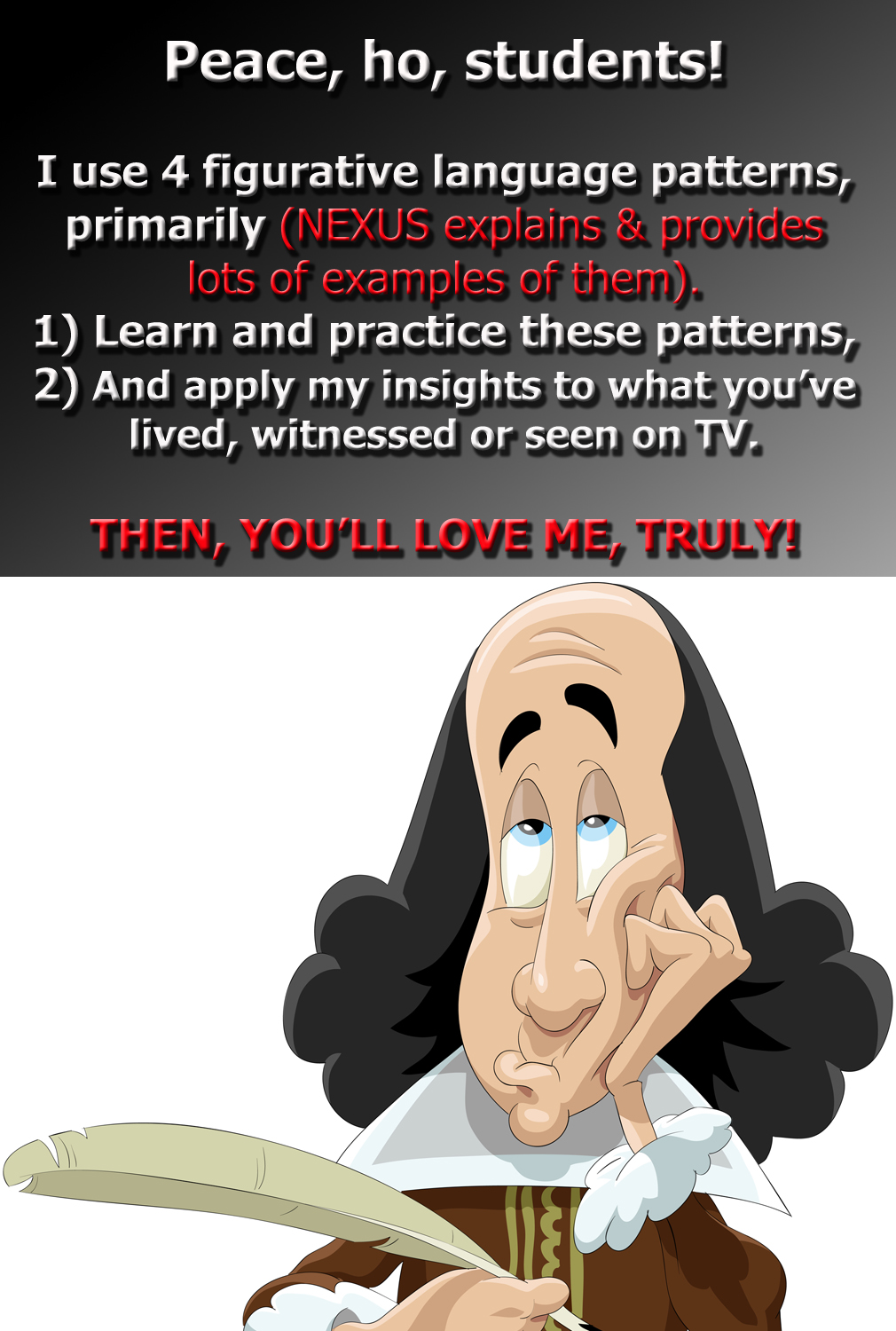
Learning to Read Shakespeare’s Figurative Language
In an interview, Kenneth Branagh (the director of Henry V, Much Ado About Nothing, and Hamlet) recalled that as a student reading The Merchant of Venice, he may as well have been reading wallpaper.
If students cannot read figurative language, they cannot decipher Shakespeare — and many other writers. Most students can follow the plot line of great literature, but typically they miss the poetry and insights into human nature that they should be connecting to their own experiences.
With NEXUS students learn to read and appreciate figures of speech by Nexplicating them and linking the author’s insights to their own experiences (real or vicarious). If done in a dry, academic way, explications can be tedious, turning off rather than turning on students. Every NEXUS book includes exciting figurative language exercises and lessons that use a classroom-tested, 4-step explication method (the nexplication) that inspires students to mine metaphors and other figures of speech enthusiastically and link them resonantly to their own lives.
Online Shakespeare Study Hall (Coming Soon)
A Simple Way to Teach Shakespeare’s Language Without Simplifying his Text.
Shakespeare is the only writer that the Common Core Language Arts Standards specifically name as an author who should be taught. Unfortunately, Shakespeare’s language seems inaccessible and off-putting to most students. The Shakespeare Study Hall (SSH) will transform students’ negative reaction to Shakespeare’s language into an enthusiastic appreciation of it. In the study hall, students use Color Coding and Graphics, Cartoons, a Four-Step Explication Method – the Nexplication – and other analysis tools to identify, interpret and appreciate Shakespeare’s rich figurative language and to link his powerful insights to their own experiences.
The SSH, which is scheduled to open in the spring of 2020, will dramatically increase students reading and critical thinking skills across the board.
SSH will feature three distinct rooms: The Romeo and Juliet room, the Macbeth Room, and the Julius Caesar Room. The classes of teachers who order at least two class sets of Romeo and Juliet and the Renaissance will enjoy one semester of FREE access to the Romeo and Juliet Room. Similarly the classes of teachers who order a minimum of two class sets of Macbeth and the Dark Ages or Julius Caesar and Ancient Rome will have FREE access to the corresponding room for one semester. One-Term Admission Keys will be provided.
NEXUS Shakespeare Units – Lesson Plans – Cross Curricular Connections – Figurative Language
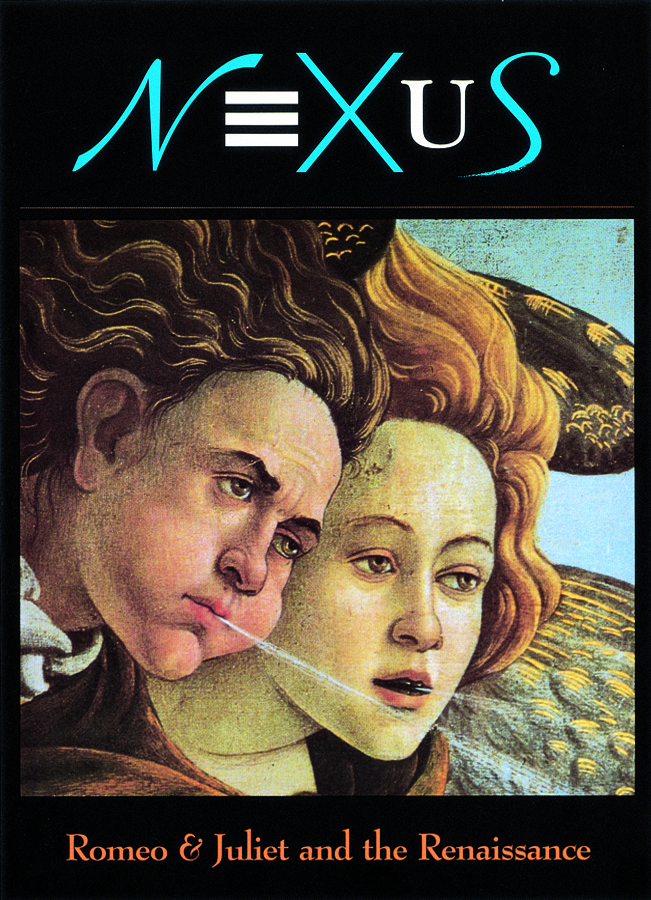
Romeo and Juliet Unit Plans – Figurative Language Exercises and Interdisciplinary Connections
Romeo and Juliet and the Renaissance – Connecting Shakespeare to history, art, music and science.
“The materials in this title, wide in scope but nicely detailed, are valuable to any teacher, and, as the editor points out, can be used with a variety of period texts. The magazine format is appealing, especially to younger students.” – THE COLLEGE BOARD
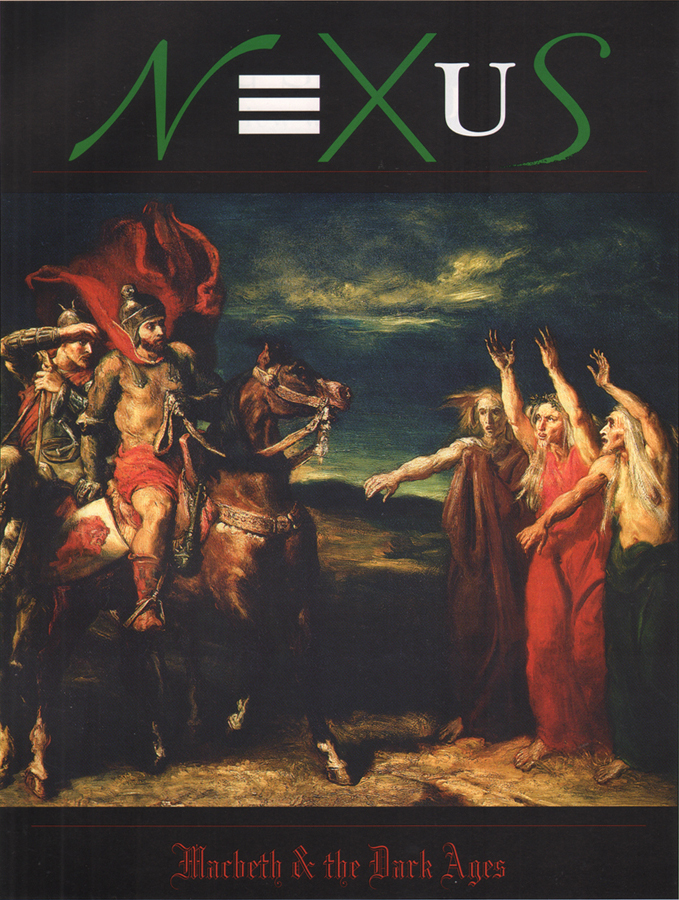
>Macbeth – Common Core Lessons – Cross-Curricular Connections
The wonderfully rich historical background in the Macbeth and the Dark Ages volume—colorful anecdotes & clear, conversational accounts of family ties, political motives, events, & phenomena — will definitely enhance students’ study of the play. The illustrations for the 14 short sections (one to three pages) of this volume are stunning: maps, production photos, beautiful reproductions of tapestries, and manuscript illuminations. — THE COLLEGE BOARD
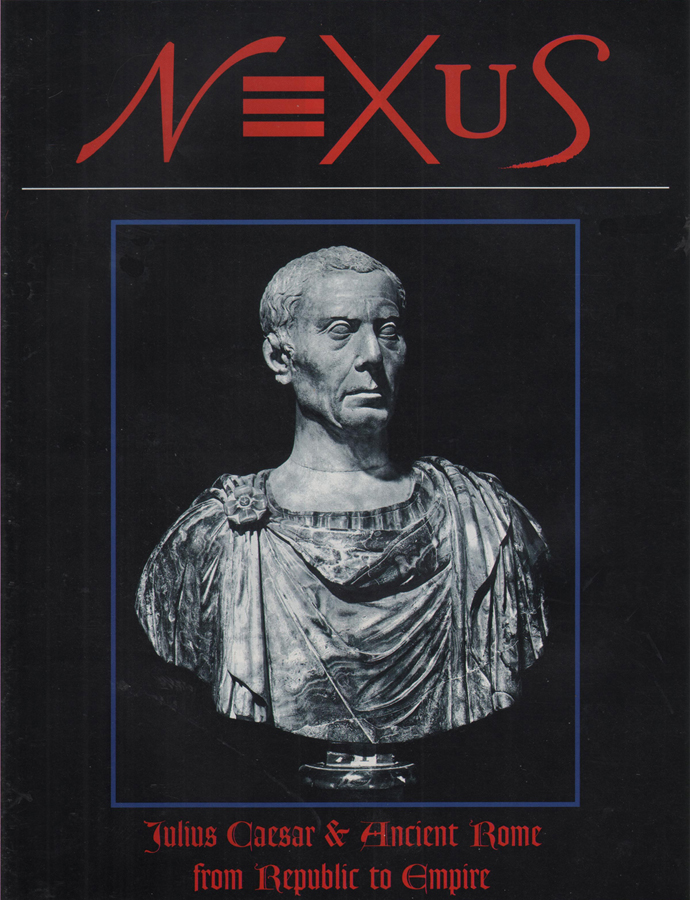
Julius Caesar and Ancient Rome, from Republic to Empire
Shakespeare’s tragedy is explored in relation to Roman History and Roman Culture. For details see Julius Caesar and Ancient Rome, from Republic to Empire, NEXUS
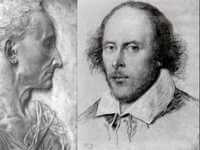 Simple graphic techniques that help students identify figures of speech; and cartoons that illustrate figurative language with humor without sacrificing the subtlety of Shakespeare’s language. For more, visit the Online Shakespeare Study Hall (Coming Soon).
Simple graphic techniques that help students identify figures of speech; and cartoons that illustrate figurative language with humor without sacrificing the subtlety of Shakespeare’s language. For more, visit the Online Shakespeare Study Hall (Coming Soon).More European Literature, Cross-Curricular Connections and Lesson Guides
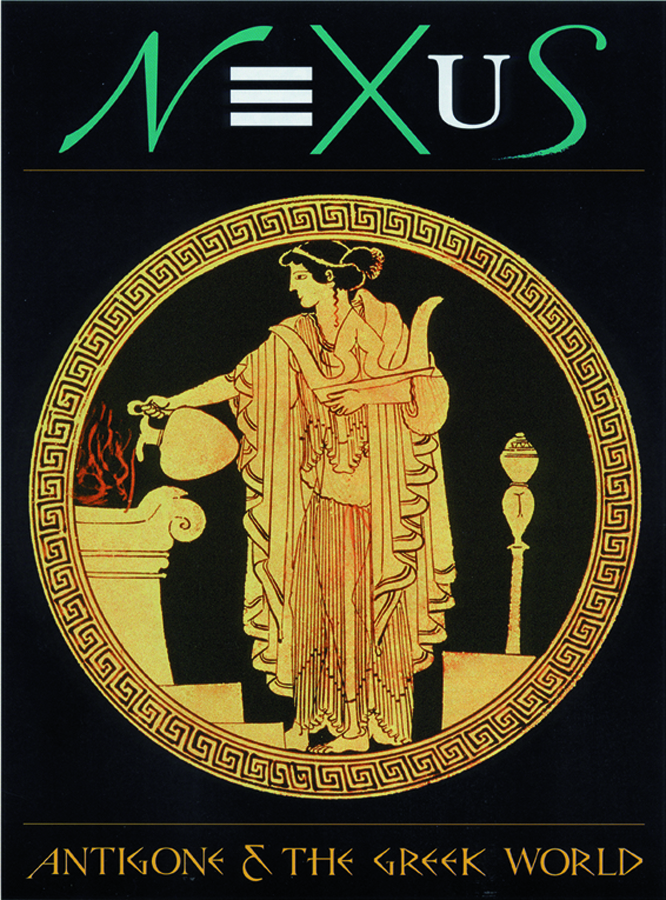
Antigone and the Greek World
This chapter “describes the Greeks’ worldview: their pantheon, attitude toward nature, the development of tragedy, and science as responses to an unpredictable world.” – THE COLLEGE BOARD
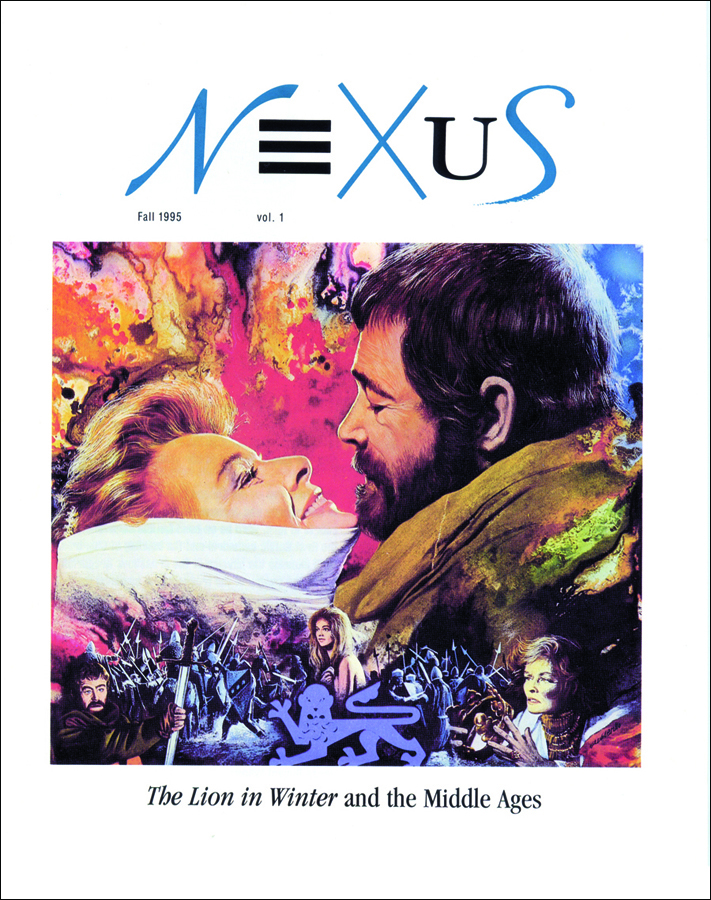
The Lion in Winter and the Middle Ages – Activities and Interdisciplinary Connections
Chapters in The Lion in Winter and the Middle Ages provide any creative teacher with a cornucopia of ideas from which to draw lessons that cross the lines that usually separate subjects. Breaking Ranks, NASSP (National Association of Secondary School Principals).
The play is accessible and often funny. The teenage sons of Henry II will appeal to students, and the fine Hepburn/O’Toole film is widely available on dvd. The play is decidedly modern: witty anachronisms and ironic asides make that fact impossible to forget. Even if the play is not your principal focus, this unit is an excellent introduction to medieval life and literature. – THE COLLEGE BOARD
Students learn to see various aspects of the Middle Ages through the eyes of characters in The Lion in Winter, from Feudalism, the 2nd Crusade, Gregorian Chant and the birth of Gothic Architecture to Arthurian romances, the birth of Heraldry, courtly love, troubadours, Magna Carta, and the physics of the crossbow (which centuries later, Leonardo da Vinci used to analyze the secrets of flight).
20TH-Century American Literature>
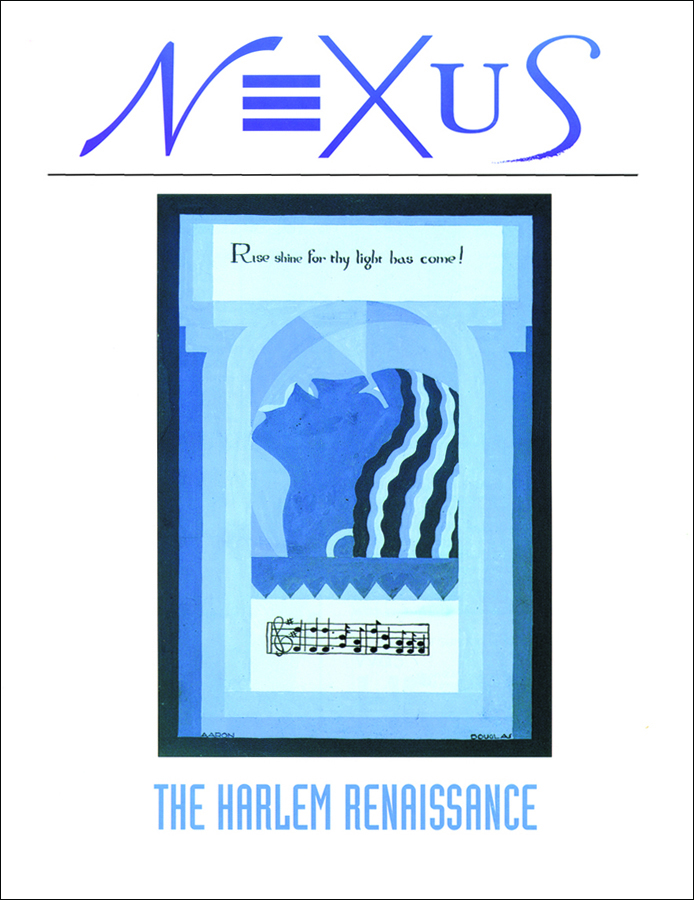
The Harlem Renaissance Lesson Plans and Cross-Curricular Connections
Songs of the Seventh Son is one of many thoughtful chapters in The Harlem Renaissance volume of NEXUS…Each volume…is a hybrid of a well-written interdisciplinary textbook and a lively, attractive magazine.” CLASSROOM NOTES PLUS, NCTE (NATIONAL COUNCIL of TEACHERS of ENGLISH).
In The Harlem Renaissance volume of NEXUS, students study the history of the Great Migration and related literature (poems by Langston Hughes, Claude McKay, Arna Bontemps and Helene Johnson, short stories by Zora Neale Hurston and others, and black theater), metaphorical and narrative visual art by Aaron Douglas, and the birth of blues and jazz. They also investigate Harlem Renaissance writers’ creative responses to what W.E.B. Dubois called “double consciousness.”
The Harlem Renaissance Guidelines provide chronological unit planning, ancillary readings, interdisciplinary activities and projects, including an illustrated blues poem project modeled on an actual collaboration between a Harlem Renaissance poet and painter. Each step of this project – from writing a personal blues poem that employs irony, to designing stylized drawings, selecting supporting colors, and composing blues music – is outlined in the lessons that accompany this NEXUS volume (see LESSON PLANS).
 The Pulitzer Prize-winning African-American poet explores the influence of blues and jazz on the poetry of Langston Hughes
The Pulitzer Prize-winning African-American poet explores the influence of blues and jazz on the poetry of Langston Hughes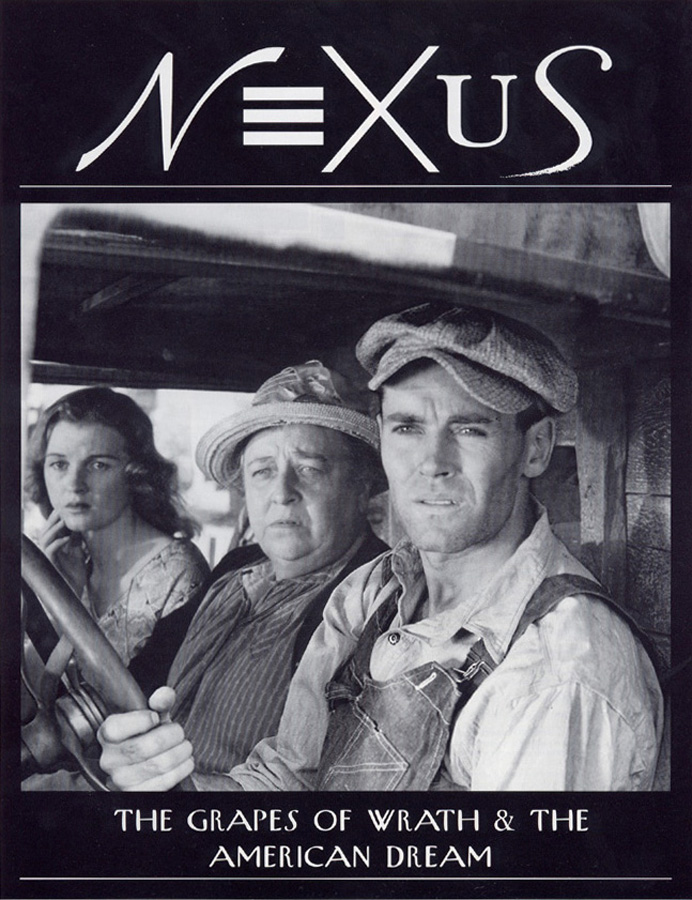
The Grapes of Wrath and the American Dream
A sure-fire hit with students. — THE COLLEGE BOARD
The exercises in this exhilarating volume focus on observation skills; theme, variation, and repetition in the novel; period music, and art. Its eleven chapters reveal the social production of art in action by showing the interpenetration of all the arts—painting, music, film, journalism, theater, and novels—to produce social change. A sure-fire hit with students. — THE COLLEGE BOARD
In this NEXUS volume students explore Steinbeck’s artistic response to the Great Depression, FDR’s alphabet programs and labor strikes, and then compare and contrast Steinbeck’s response to that of other 1930’s activist artists: WPA mural painters, Federal Theater Project playwrights, and film makers, giving students a broad and thorough understanding of the period and novel.
For our three Shakespeare units, we will soon offer downloadable:
1) Vocabulary exercises and quizzes for all the challenging, non-archaic vocabulary in the first three acts of each Shakespeare play;
2) Plot quizzes and a unit test for each play.
